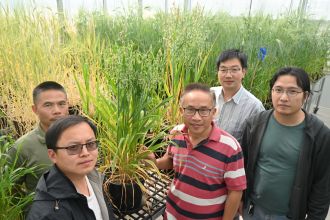
An international research collaboration has successfully decoded the pangenome of oats, a major advancement in understanding this complex cereal. The findings, published in the journal Nature, provide invaluable insights into the genetic diversity of oats, both in Australia and globally. The project involved over 70 scientists from 33 research institutions across 10 countries.
The research was spearheaded by the Western Crop Genetics Alliance (WCGA), a partnership between Murdoch University and the Western Australian Department of Primary Industries and Regional Development (DPIRD). This collaboration delivered the genome sequencing of four oat varieties, including popular Australian cultivars such as Bannister, Bilby, and Williams.
Oats are increasingly recognized for their health benefits, including high fiber content and cholesterol-lowering properties. Despite their nutritional value, the genetic complexity of oats—characterized by six sets of chromosomes from three ancestral species—has posed significant challenges for researchers.
Unveiling Genetic Mechanisms
Led by researchers from the IPK Leibniz Institute, the team sequenced and analyzed 33 oat lines, which included both cultivated varieties and their wild relatives. Utilizing advanced sequencing technologies, they examined gene expression patterns in six different tissues and developmental stages of 23 oat lines. This comprehensive effort resulted in a pantranscriptome, a detailed map of gene activity across the plant.
Professor Chengdao Li, Director of the WCGA and a leader at Murdoch University’s Centre for Crop and Food Innovation, highlighted the significance of these findings. He stated, “This research transforms oats from a genetic ‘black box’ into a blueprint that will enable precision breeding for a healthier, more sustainable food future.” The study revealed specific genetic signatures that facilitate adaptation to Australia’s unique environment, such as the 2A/2C gene translocation.
The research also uncovered unexpected features of oat genetics. Despite significant gene loss in one of the three subgenomes, oat plants maintain high productivity, as other gene copies can compensate for the missing functions. Structural rearrangements in the genome, including inversions and translocations, were found to be associated with environmental adaptation. These changes may have played a crucial role in the domestication of oats and the development of reproductive barriers between different populations.
Implications for Agriculture and Breeding
Dr. Kaara Klepper, Executive Director of DPIRD Broadacre Systems, emphasized the impact of this research on modern genomics and crop breeding. He remarked, “The decoded oat pangenome epitomizes how genomics is stimulating advances in crop breeding, agricultural production, and human health by providing novel genetic resources.”
The findings are expected to assist Australian breeders in selecting or developing oat varieties optimized for specific regions, thereby accelerating the creation of improved and more resilient crops. This is particularly relevant in the context of a changing climate, which poses challenges for agricultural sustainability and productivity.
The Australian arm of this project received joint funding from the Grains Research and Development Corporation (GRDC), the WA Oat Industry partnership, DPIRD, and Murdoch University. The Pawsey Supercomputing Centre provided essential computing resources for the analysis.
This groundbreaking study represents a significant step forward in oat research and holds promise for enhancing crop production and nutrition worldwide. For more information about the International PanOat Project and the implications of this research, further details can be found in Nature.







